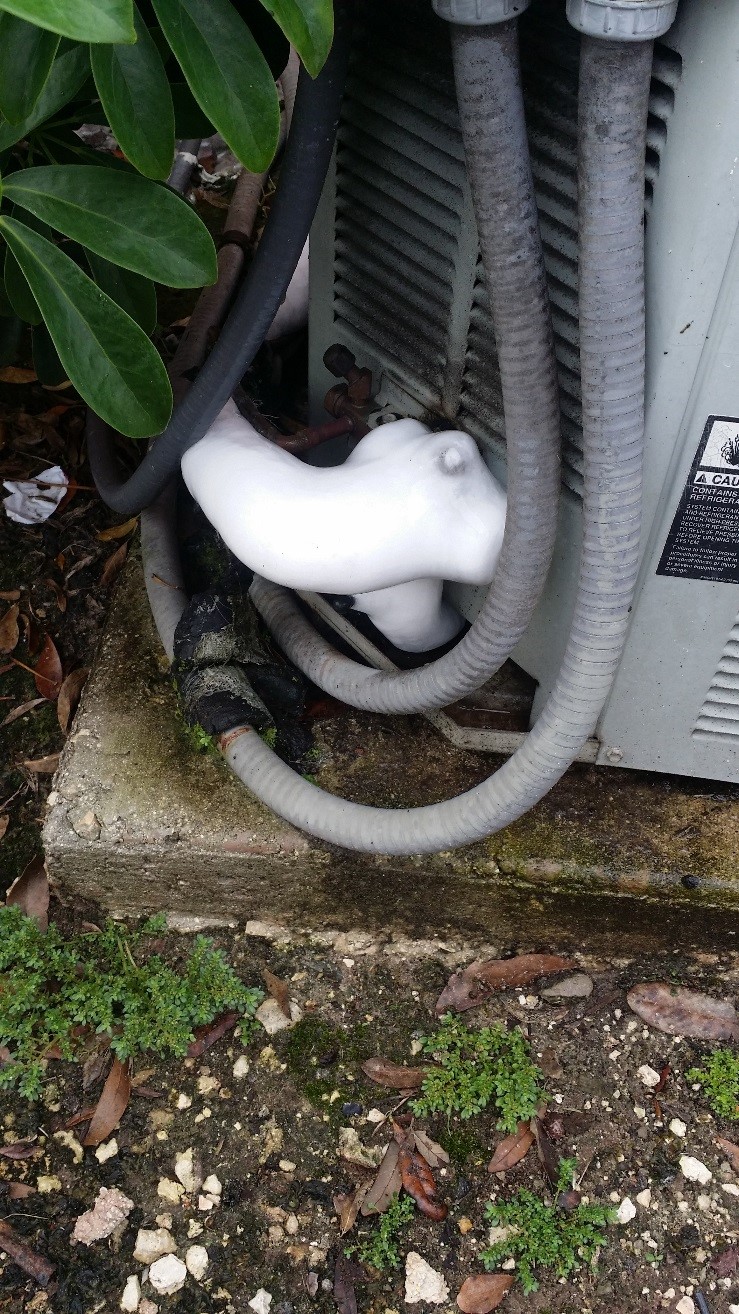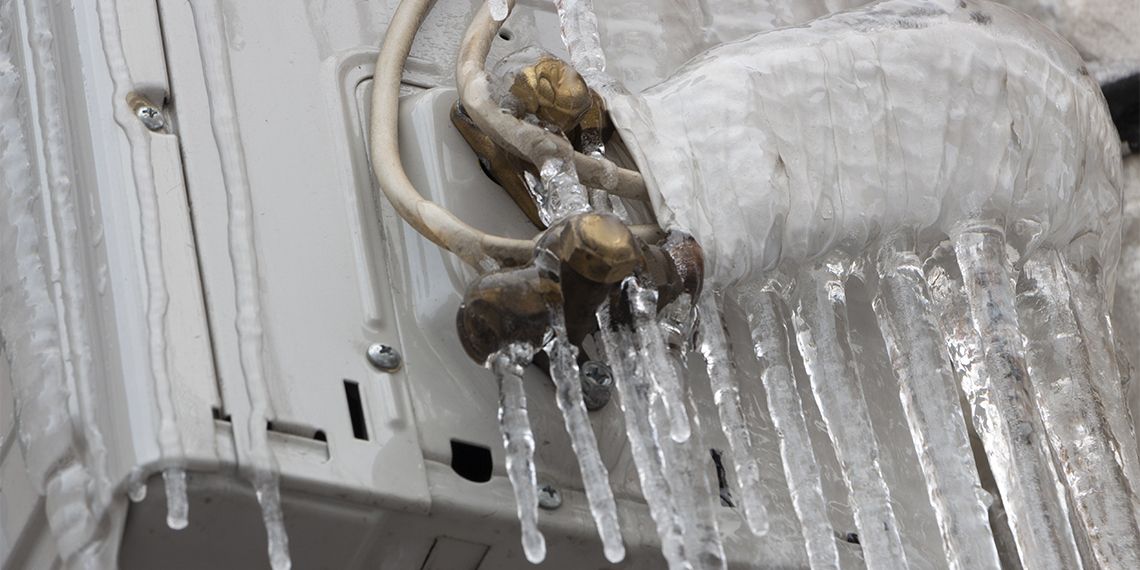Dealing with a Frozen AC Pipe: Step-by-Step Handbook
Dealing with a Frozen AC Pipe: Step-by-Step Handbook
Blog Article
We have unearthed this post pertaining to Why Is Ice On My Outside Air Conditione directly below on the net and believe it made sense to write about it with you on my blog.

Introduction
Uncovering that your a/c pipeline is frozen can be worrying, especially throughout warm summer season when you rely upon your air conditioner the most. Recognizing what to do in such a situation is important to stop more damage to your cooling system and ensure your comfort inside your home.
Recognizing the Causes
Numerous factors can contribute to the freezing of an a/c pipe. Comprehending these reasons can aid you deal with the issue successfully.
Lack of Airflow
One usual reason for an icy air conditioning pipeline is inadequate airflow. When the air movement over the evaporator coil is restricted, it can trigger the coil to go down below freezing temperature, leading to ice formation on the pipe.
Low Refrigerant Levels
Inadequate cooling agent levels in your air conditioner system can likewise result in an icy pipe. Reduced refrigerant levels can trigger the pressure in the system to go down, leading to the freezing of moisture on the evaporator coil.
Winter Conditions
In cooler environments, freezing temperatures outside can add to the freezing of air conditioner pipes. If your a/c unit is not effectively protected or if there are leakages in the ductwork, cold air can infiltrate the system, triggering the pipeline to ice up.
Dirty Air Filters
Dirty or stopped up air filters can limit air movement in your AC system, resulting in different problems, consisting of a frozen pipeline. It's necessary to replace or clean your air filters routinely to ensure correct airflow and protect against ice accumulation.
Signs of a Frozen Air Conditioner Pipe
Acknowledging the indicators of an icy AC pipeline is essential for punctual action.
Minimized Airflow
If you notice a substantial decrease in air flow from your vents, it can indicate an icy pipeline.
Ice Buildup on the Pipe
Visible ice accumulation on the cooling agent line or the evaporator coil is a clear sign of a frozen air conditioning pipeline.
Weird Sounds from the Unit
Unusual noises, such as hissing or gurgling, originating from your AC unit can indicate that there's ice present on the pipe.
Immediate Actions to Take
When faced with an icy AC pipe, it's important to act quickly to prevent more damages to your air conditioning system.
Shutting off the a/c
The first step is to turn off your air conditioning system to stop the system from running and aggravating the problem.
Checking for Blockages
Inspect the area around the interior unit for any blockages that might be blocking airflow, such as furniture or drapes.
Thawing the Pipe
You can use mild techniques like placing towels taken in warm water around the icy pipe to help thaw it gradually.
Preventive Measures
Taking safety nets can assist stay clear of future incidents of an icy a/c pipe.
When DIY Methods Fail
If your efforts to thaw the pipeline or address other concerns are unsuccessful, it's time to call a professional.
Value of Hiring a Professional HVAC Technician
A certified HVAC service technician has the proficiency and devices essential to diagnose and repair issues with your a/c system securely and effectively.
Regular Maintenance Checks
Arrange routine maintenance contact a specialist HVAC technician to ensure that your AC system is running efficiently.
Changing Air Filters
Routinely replace or clean your air filters to avoid air flow restrictions and maintain optimal performance.
Shielding Exposed Pipes
If your air conditioner pipes are subjected to cold temperatures, take into consideration protecting them to stop freezing throughout cold weather.
Seeking Professional Help
If DIY techniques fall short to fix the issue or if you're not sure about how to continue, it's ideal to look for help from a certified HVAC technician.
Conclusion
Dealing with a frozen AC pipeline can be an irritating experience, yet understanding how to react can assist reduce damage and recover comfort to your home. By understanding the reasons, acknowledging the signs, and taking timely action, you can properly attend to the issue and stop future occurrences.
Frozen AC Line: Why It Happens & What To Do About It
A frozen AC line can be a rather peculiar sight in a place like Phoenix, Arizona where nothing ever freezes. In this post, we’ll discuss what makes an air conditioner line frozen – and what you can do about it.
Dirty Air Filters
Did you know that you should be cleaning or replacing your air filters on a monthly basis? Failing to do this can result in airflow issues that, in turn, cause your evaporator coils and lines to freeze over. You’ll notice a buildup of ice on both components, although the buildup on your pipes will, of course, be more evident unless you open your air condition up to reveal the coils.
What To Do About It
Give your air filter a good cleaning if it’s reusable. If not, replace the filter outright. Next, switch your air conditioner’s fan setting on and leave it there for 2-3 hours. This will draw warm air in, helping to thaw your evaporator coil. You can also check out this article for some tips on cleaning the coils themselves if you’d like to speed the process up. Before you switch the unit back to its normal state, make sure the supply vents are completely unobstructed and free of dust or other debris.
If you keep having this issue even after replacing your filters regularly, contact a local HVAC repair company and have them inspect your evaporator coil, ductwork, and any other components that may be at fault. If you live in the Phoenix, Arizona area, give American Home Water and Air a call.
Low Refrigerant Levels/Leakage
What To Do About It
Contrary to what air conditioner “recharge” companies often tell their clients about refrigerant, it should never need to be simply refilled. You see, refrigerant runs in what experts refer to as a “closed loop.” Refrigerant really shouldn’t be leaving that loop. If it is, you’ve got a leak.
Paying someone to come and pump more refrigerant into your system (aka “recharge” it) isn’t the solution. Doing that will simply kick the can down the road. Besides, refrigerant leaks can be harmful to the environment and people in your home.
Rather, you need to take care of the leak with the help of a technician. Check out this article for some more information about dealing with air conditioners that are leaking refrigerant. Before you contact a technician, switch your thermostat to the off position. Then, switch the fan setting on and let it run for 2-3 hours so the unit can thaw.
Improper Temperature Setting
Improper temperature settings can also cause a drop in your air conditioner’s pressure. What many people don’t realize is that air conditioners are actually designed to run when temperatures have fallen above roughly 60 degrees Fahrenheit. If you run the unit when it’s cold outside, you’ll run into many issues, including frozen components.

I came across that piece about Why Is Ice On My Outside Air Conditione when doing a search on the search engines. Sharing is nice. Helping others is fun. Thank you so much for taking the time to read it.
Click Here Report this page